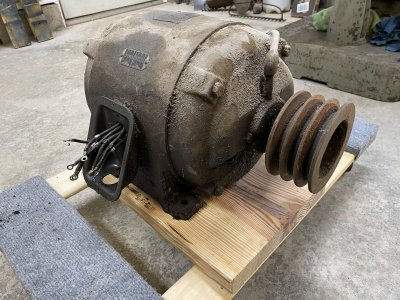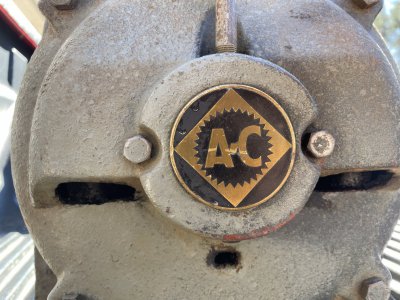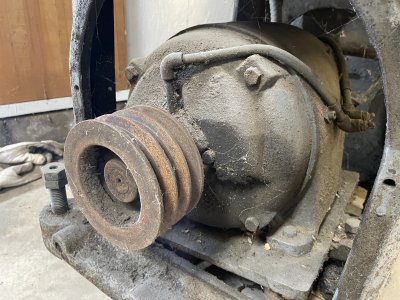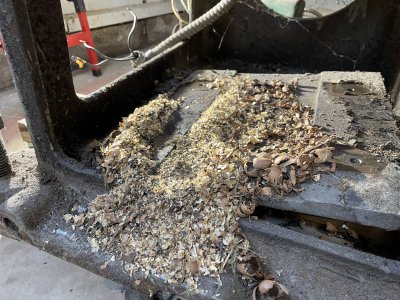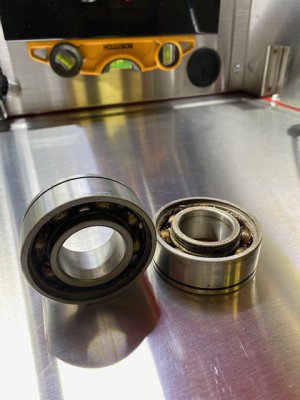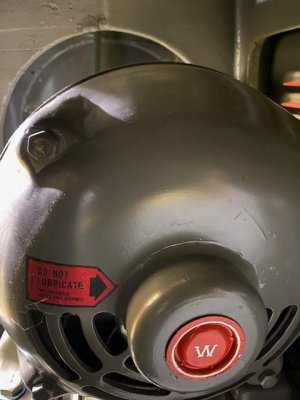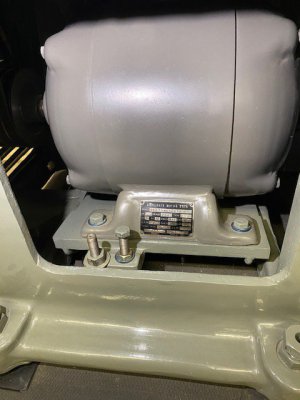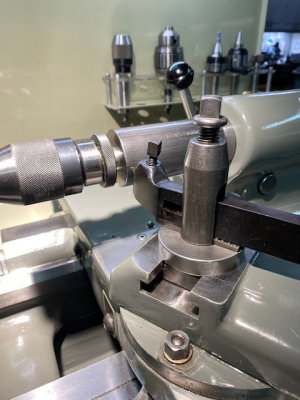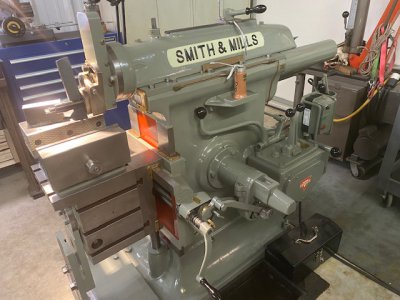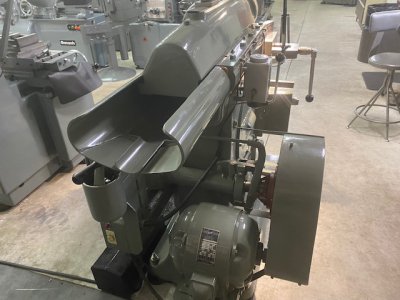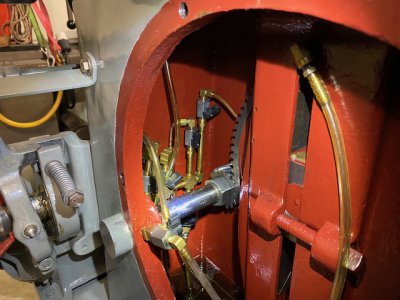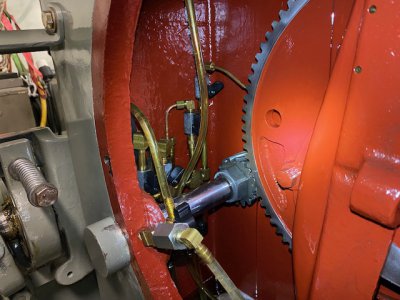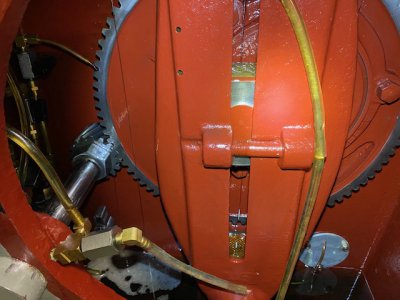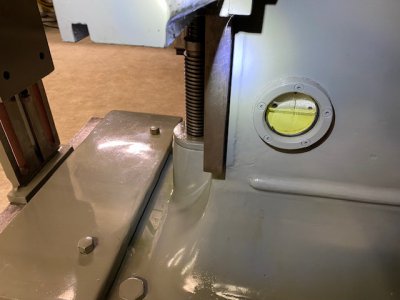- Joined
- Jan 9, 2023
- Messages
- 239
Pulled the motor out and cleaned it up to take it to the motor shop. My mill motor needs looked at so figured I’d kill two birds with one stone and take both. It likely hasn’t run in at least 20 years and there may have been a mouse living in it at some point. It has remote grease fittings plumbed with brass tubing and fittings which won’t be needed with sealed bearings but they looked cool once I cleaned it off. I forgot to take a pic after cleaning but while I was wiping it off I noticed a badge covered in gray paint and cleaned it off with some solvent. I like this old motor more and more! And talk about heavy. By my calibrated sphincter, feels like about 125 lbs. maybe more. It’s all cast so no surprise there.
